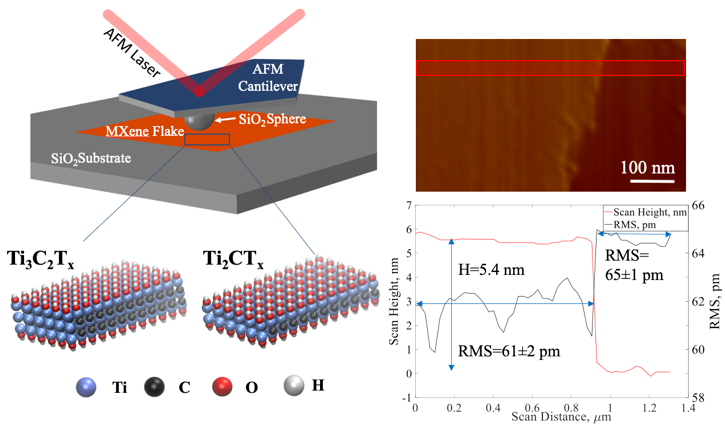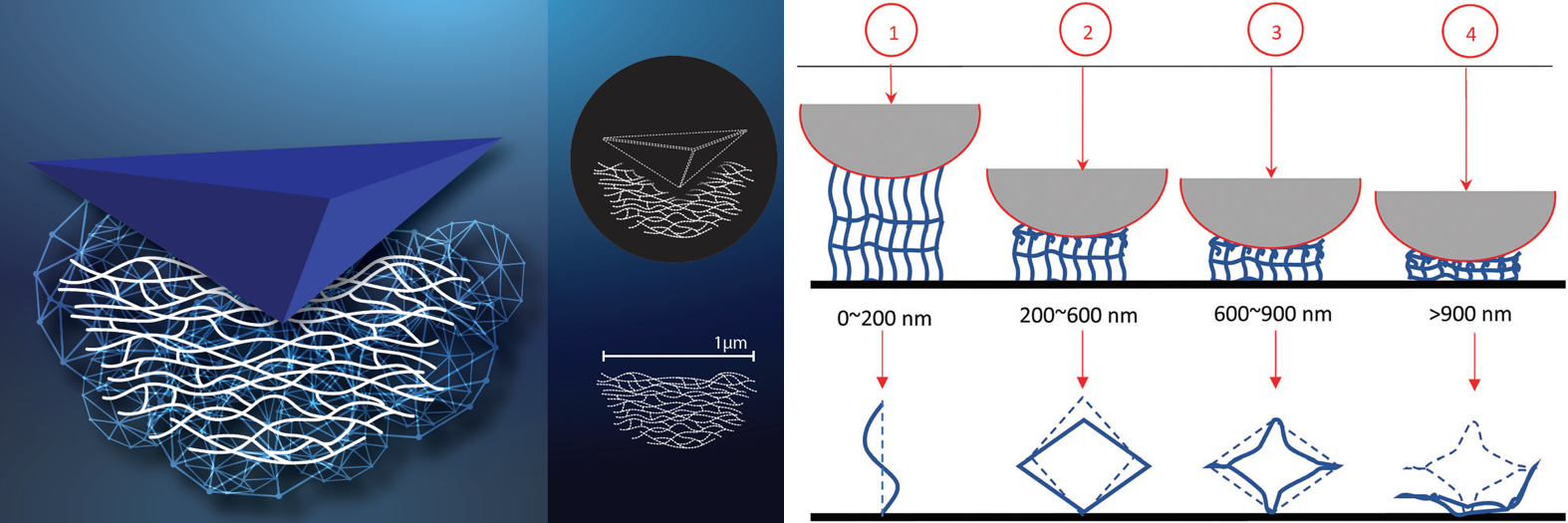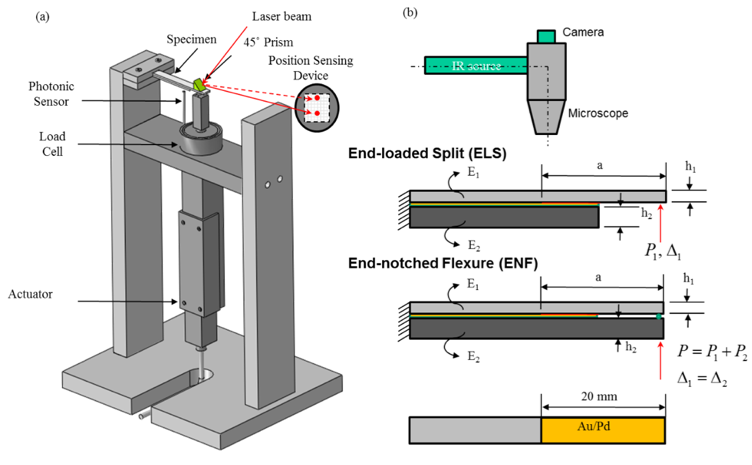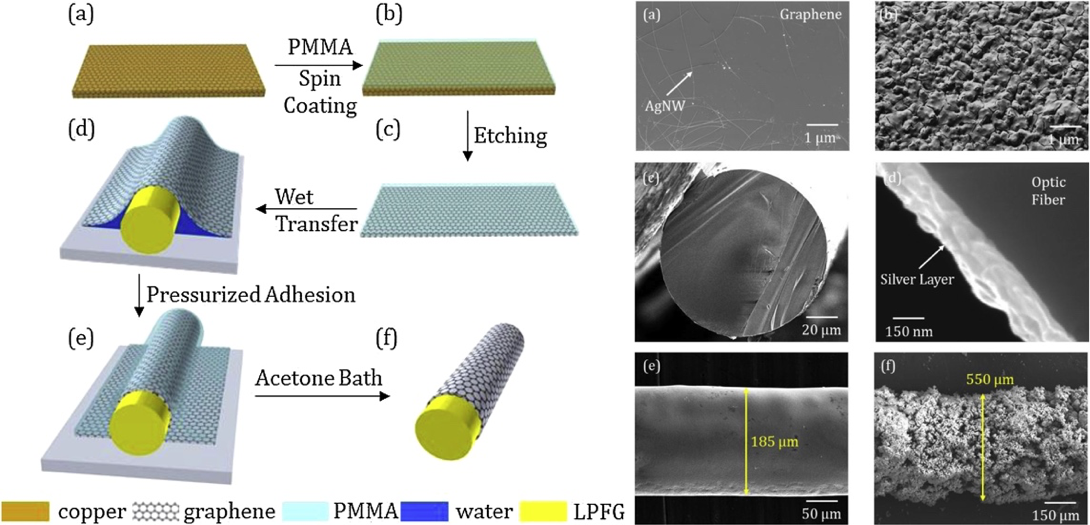Research Highlights
The research group main focuses on three directions: (1) nanomechanics and nanomaterials, (2) sensing and multifunctional materials, (3) 3D printing of reinforced cementitious materials. The team will explore the fundamental mechanics of materials at atomic-/nano-scale when subjected to multi-physical and chemical environments, especially at material interfaces. Understanding these properties will enable the implementation of sensing and multi-functional mechanisms of advanced composite material systems. In addition, the team also would like to link these understandings with the advanced additive manufacturing method to build our next-generation civil infrastructure.
Highlight 1: Y. Li, S. Han, C. Wei, C. Wu, V. Mochalin, Adhesion of Two-Dimensional Carbides (MXenes) and Graphene to Silicon , Nature Communications, 3014, 2019
The group carefully measured the adhesion of a novel two-dimensional (2D) materials, MXene, to other electronic and 2D materials.

Highlight 2: C. Wu, S. T. Tahereh, C. Wei, A. Ghasemi, G. Chen, N. Leventis, W. Gao, Multi-scale Progressive Failure of Polyurea Aerogels , Soft Matter, Cover Article, DOI: 10.1039/C8SM01546E, 2018
The group investigated the failure mechanisms of nanostructure polymers through nanoindentation and multi-scale modeling approaches. *Covered Article

Highlight 3: C. Wu, R. Huang, K. M. Liechti, Simultaneous Extraction of Tensile and Shear Interactions at Interfaces , Journal of the Mechanics and Physics of Solids. 2018
The PI and his Ph.D advisors developed a direct extraction approach that can extract the interfacial traction-separation relations (TSR) only using far-field measurements from a laminated beam configuration, which includes displacements and rotations at the loading point. This approach presents the possibility of measuring mixed-mode TSR without making any assumptions on the profiles nor the numerical analysis.

Highlight 4: C. Guo, L. Fan, C. Wu, G. Chen, W. Li, Ultrasensitive Corrosion Sensors with Gr/AgNW Electroplated Fe-C Coating on LPFG , Sensor and Actuator B: Chemical, 2019
The team utilizes graphene to functionalize the surface of the optic fiber to enhance the sensitivity and lifespan of a corrosion sensor.
